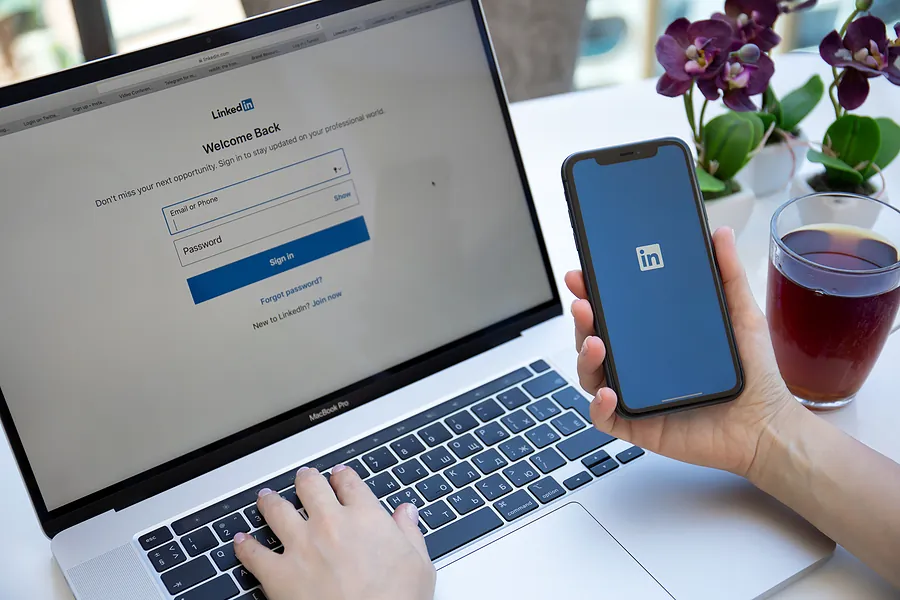Cold Emails That Work

Cold emailing prospects is a highly underrated sales skill. For it to be effective, we need to change our perspective on the purpose of cold emailing. For professional sales reps, cold emails should be viewed as a relationship-building tool over a sales tool or promotional tool. For modern sellers, it is a mistake to attempt to generate a sale or even an appointment for a complicated solution with a cold email. In this article, we explore everything you need to know about cold emails for a professional salesperson.
Deliverability is Fundamental
When a prospect says, “I never received your email,” not only is it soul-crushing, but could be a delivery issue with your cold emails. The first step for ensuring your cold email is effective is to ensure your emails are being delivered to the recipient’s inbox. If your emails are not landing in your prospect’s inbox, your prospects will never see your email. Therefore, creating cold emails that avoid the spam folder is critical. [Note: This article will assume your domain and IP have not been flagged as spam before.]
When writing a cold email, there are certain sales words that will flag your email as spam. These include “Buy Now,” “Limited Time Offer,” “Free Consultation,” “Free Trial,” and any other words that create a false sense of urgency or unnecessary pressure. To avoid your email being mistaken as spam, remove all sales terminology from your cold email. This may sound counterintuitive, but the only thing we are trying to sell is a reply from the recipient. A free tool I’ve found highly effective at removing spam words from cold emails is Mail Meteor.
Profile Picture
I’ve noticed a few influencers that I receive emails from are using a GIF as their profile picture. I like this strategy because when I preview my messages on my phone, their email catches my eye. The one that really stands out is from James Clear, author of Atomic Habits. He is using a GIF that allows his profile picture to scroll from left to right. I would suggest using a professional headshot image, with a bright color background and the GIF scrolling effect.
Subject Line
The first word in the subject line should be your reader’s name. I like this tactic because many recipients are previewing emails on their mobile devices before opening the desktop email application. When I see an email with my name in the subject line on my phone, it prompts my curiosity. It’s so easy to swipe left and archive an email from your phone, which is what we want to prevent. Using the reader’s first name in the subject line is the best defense against being archived without being opened.
Length of Cold Email
A cold email should always be short. When a prospect views a long email, they immediately think, “I don’t have time to read this right now.” In this case, they will likely will never get back to it. Give yourself the best chance by keeping your cold email short so it passes the initial eye test.
The question you may be asking is, “How short is short?” Keep your cold email under 125 words. This will force you to remove fluff and unnecessary words. Why less than 125 words? Because the average reader can read between 200 to 250 words per minute and you want your recipient to complete your email in less than 30 seconds. If your prospect cannot read the email in under 30 seconds, you will lose their attention. Once your prospect replies, then you can go into more detail.
Create a Connection
The best way to create a connection with a cold email is to find something in common with the prospect. This is where LinkedIn becomes a valuable tool. It could be a shared connection. Or perhaps you attended the same school or served in the military, just like the prospect whose attention you’re trying to capture. But you can also reference their blog post or mention a podcast that your recipient participated in. Taking the time to find something in common with your prospects will indicate to the recipient that you did your homework.
There are some sales reps who will say, “That will take too long.” I would reply, “Are you looking for the easiest way to send cold emails or the most effective?” I would suggest to try it for a week and if you do not like the results, go back to generic templates. However, you will likely find that the more personalized you write each email, the better your responses will be.
Key Elements of Cold Email
I’ve just made my case that, in order to create an initial connection, we need to find something in common. The next step is to let your reader know that you understand their pain. I like to call this putting salt in the wound. You want to bring to their attention a problem you are aware of that exists in their business. This is not to say to be rude or abrasive, but to show empathy with their problems. For example:
Subject: Justin, your Friday LinkedIn Post
Justin, your LinkedIn post Friday caught my attention. As a founder of a SaaS platform, are lost sales on your radar?
Having worked with 100s of SaaS providers, we noticed that reducing lost sales by 10% can increase YoY revenue 50%. Would you be opposed to receive our latest case study?
The above message is 51 words. Notice that we are not trying to sell anything or even ask for an appointment? We are simply asking for a reply. This is a low-risk email for a prospect, especially one you’ve never spoken with before.
The You:I Ratio
The most overused word in cold emails is “I.” You should be speaking to your prospects and not talking about yourself. For example, how often do you see this sentence in the emails you currently receive? “I was just reaching out to see…” Keep track of how many times the word “I” is used. Avoid starting your first sentence off with “I.” Ensure to have twice as many “you’s” as there are “I’s.”
Call-to-Action
If the prospect is interested in your cold email, they will take action. The call-to-action should remain low-pressure and low-commitment. For example, a simple, “Interested?” or “Curious?” will work fine. No need to overthink it or use a full sentence like, “If you would like to schedule a time to hop on a quick call, here is my calendar link. Hoping to hear from you soon.” These statements put pressure on your reader and won’t help to establish the relationship. Instead of thinking about selling the appointment, shift your focus to selling the reply.
Email Signature
A professional email signature can make a great impression, but it should not be used as a promotional tool. It’s my opinion that certain email signatures can scream, “I want to sell you something.” That’s a problem. Unless you are selling graphic design services, you may want to consider a minimalist email signature. Having five social media account buttons, your calendar, two phone numbers, and your company slogan is overkill.
Messaging Sequence
It is unreasonable to believe a prospect will respond to our first cold email outreach. With that in mind, we need to prepare a sequence of emails that allow us to follow up over a period of 21 days. The goal is to have your cold emails flow together. This means they relate to the previous email and have a congruent message throughout the sequence.
Cold Email KPIs
If you are committed to improving your cold email skills, it helps to have key performance indicators to shoot for. As we stated earlier, the goal is to generate a response, not sell the appointment. Having a response rate between 10%-15% should be the goal. Imagine that for every 10 cold emails you sent, you received one response. I would imagine you find the time to send at least 10 cold emails a day, correct?
But to achieve a 10-15% response rate, you will need an open rate of around 70%. Therefore, the subject line is critical. Low open rates would be an indication that your subject lines are missing the mark. If you have a solid open rate, but a low response rate, that is an indication you need to improve the content of the message. Of course, these are just ballpark KPIs. If you are well below these numbers, it’s time to double down by running a A/B tests and figuring out what works for your audience.
In Conclusion
There is not a single negative as a salesperson for improving your cold emailing skills. Being able to concisely write less than 150 words to generate curiosity is a valuable skill for sales reps to acquire. Once you master it, cold emailing will become one of your sales superpowers. If your current generic templates are not producing the results you want, follow the steps in this article and watch your cold email results improve.

- Account Planning (11)
- Awards (49)
- Client Testimonial (37)
- Personal Branding (19)
- Podcast (11)
- Research (70)
- Sales Career Development (87)
- Sales Coaching (156)
- Sales Consulting (137)
- Sales Culture (170)
- Sales Enablement (354)
- Sales Leadership (109)
- Sales Management (248)
- Sales Negotiation (16)
- Sales Prospecting (125)
- Sales Role-Playing (18)
- Sales Training (235)
- Selling Strategies (263)
- Soft Skills (70)
- Talent Management (94)
- Trusted Advisor (27)
- Virtual Selling (49)
- Webinar (9)


























